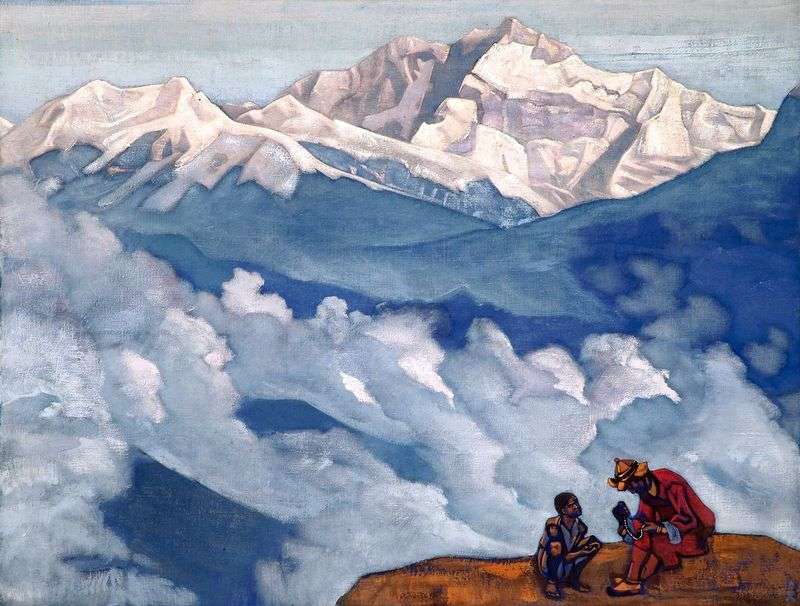
The painting “Pearls of Search” was written in 1924. The 20s of the twentieth century – a difficult historical period of search and approval of new meanings in life, art, culture. This is the time of the reorganization of the world. The name of the work itself contains the idea of a great, eternal search, deep philosophical, existential thinking. The picture is written in tempera. Thanks to this artistic material, color images are made lighter and not as dense, a kind of, pressed down by layers of paint.
The temperature as if passes the air, and with it the eternity itself, invisible streams of eternal space and time, appears through the picture. In “The Pearl of Quest”, eternity and present are intertwined in a special way. This creates an unusual mysterious and at the same time a beautiful image-contrast. When the silence of the mountains and the quiet movement of clouds enters the life of people, in some way influencing them, prompting them to think about high categories, contemplating the bright light of the mountain peaks.
Pearl of Quest is a philosophical, spiritual fabric. In the works of Roerich, the beautiful verticals take the leading place. The central image of the picture is created thanks to the very drawing of the vertical, namely, due to the image of the radiant, majestic Kanchendzhangi – the Mountains of the Five Treasures. The top of the Himalayas is spelled out with detailed, thoughtful strokes. At the same time masterfully transferred chiaroscuro drawing of the mountains.
The image of the Mountain of the Five Treasures is precisely molded from complex shades, resembling the grayish-pale cold brilliance of mother of pearl. Pearl shades of Kanchenjungi have a certain symbolism. Pearl colors give a sense of mystery and hidden meanings, filling the picturesque canvas with the breath of some deep, unearthly riddles and secrets. Dark blue colors of cold, breathing with ice, clouds and fog, mountain spaces bordered the bright great peak. At the same time, the artist’s application of paints is reminiscent of smooth thin patterns, when one color implicitly, gently turns into another, enriching the existing range of shades.
At the same time, not only the coloring is complicated, but also the range of those feelings and experiences that the author intended to convey with his canvases. The images of the clouds differ in volume, recalling the great silver breath of the mountains. This is where the mighty spirit of these places is concluded. The clouds on Roerich’s canvases remind of a “flying hail”, “wonderful hail” according to a subtle metaphorical comparison of the poet of the Pushkin pore Yevgeny Abramovich Baratynsky. Roerich’s clouds are alive, filled with awe and tenderness. They are definitely living beings who are carefree and easy in their eternal flight. Matt shades of clouds emphasize a dense layer of cold air, mountain fogs and clouds. The softness of the outlines of the pattern of clouds responds by contrast to the clear lines of the mountain tops that are written out.
Painting “Pearl of Quest” is a pictorial symbol of the quest, the motive of the eternal search for the spirit. The motive of the quest sounds in the very image of the wide boundless mountains, dense string of clouds. Roerich’s philosophical work is completed by the image of two heroes – the student and the Master, who enthusiastically selects a thin pearl necklace. The necklace is a symbol of eternity. The pearl thread is closed, endless in itself. The pearl of searching is a metaphor of eternal spiritual searches, the spirit of a person is eternal in its rushing and searching for meaning.
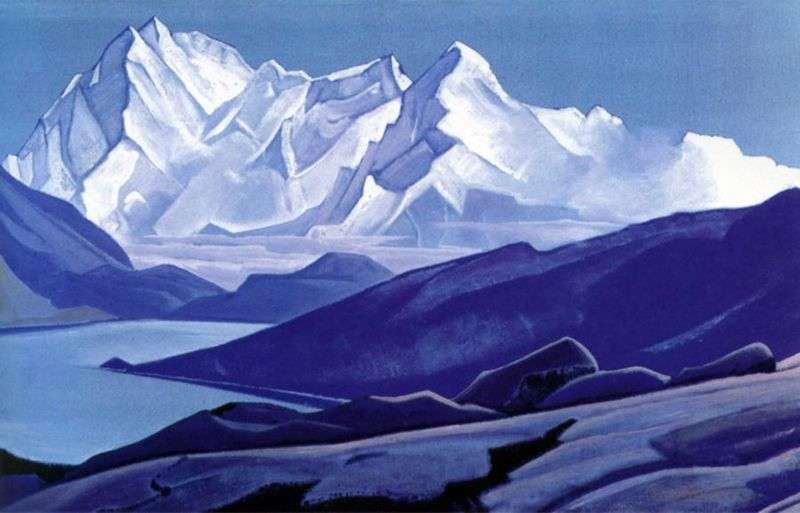 Sacred Himalayas by Nicholas Roerich
Sacred Himalayas by Nicholas Roerich Kanchenjunga by Nicholas Roerich
Kanchenjunga by Nicholas Roerich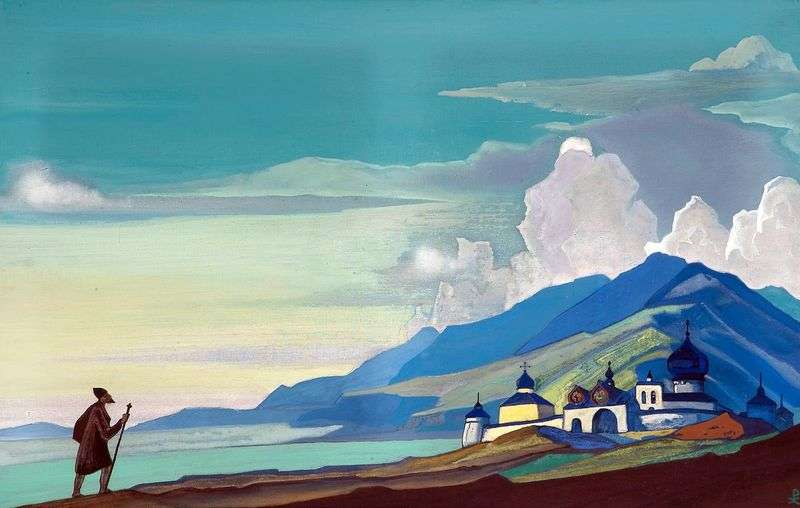 The Wanderer of the Light City by Nicholas Roerich
The Wanderer of the Light City by Nicholas Roerich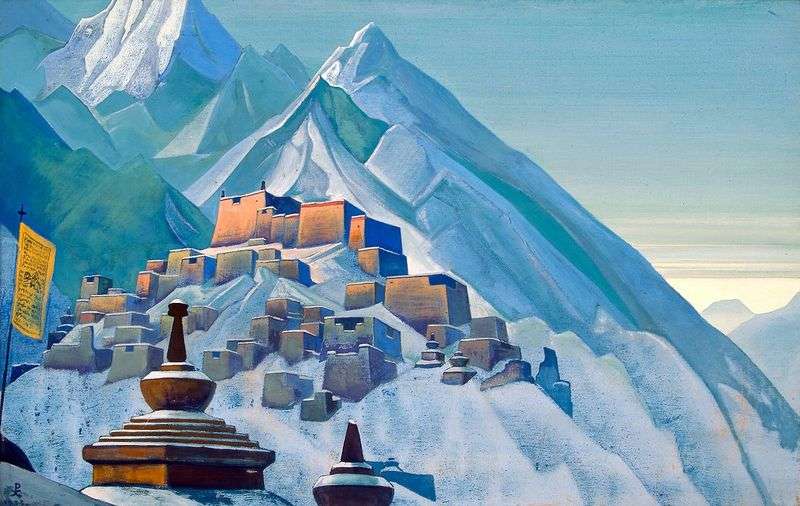 Tibet. Himalayas by Nicholas Roerich
Tibet. Himalayas by Nicholas Roerich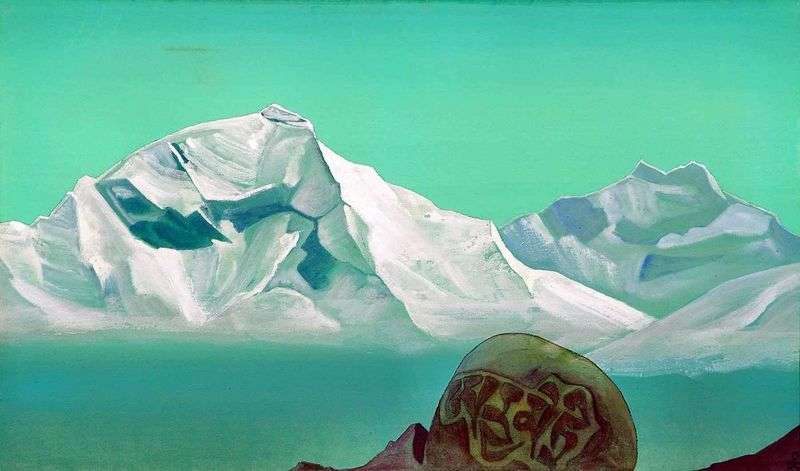 The road to Kailash by Nicholas Roerich
The road to Kailash by Nicholas Roerich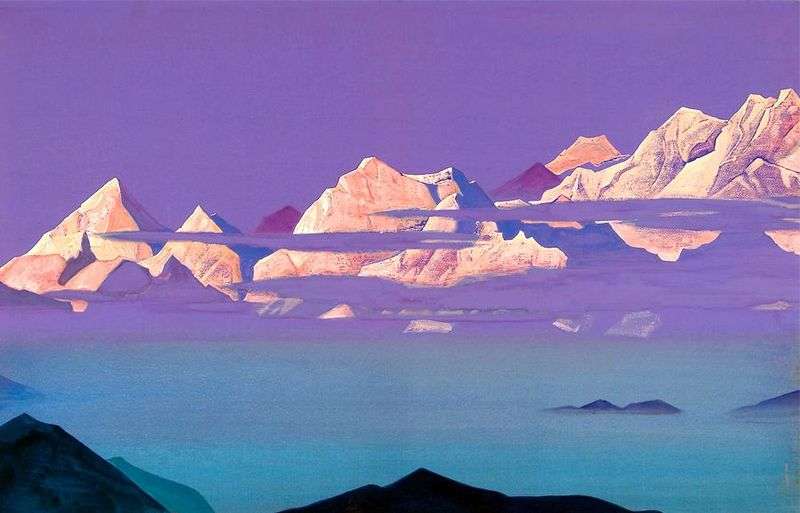 Pink Mountains by Nicholas Roerich
Pink Mountains by Nicholas Roerich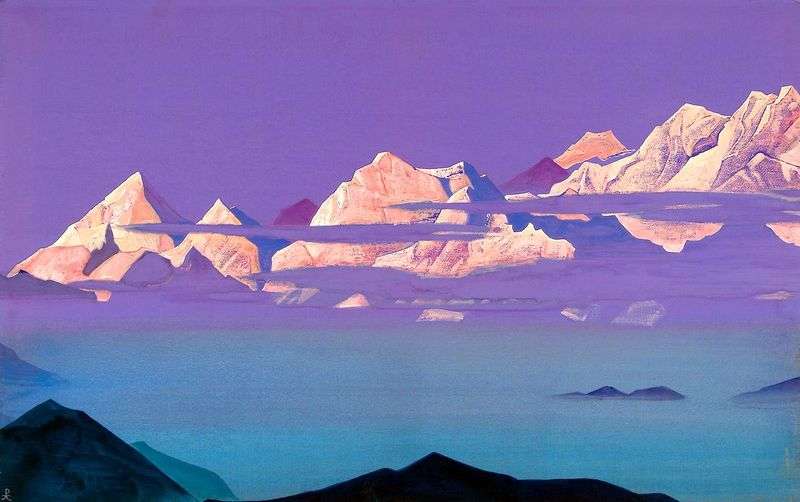 Himalayas. Pink Mountains by Nicholas Roerich
Himalayas. Pink Mountains by Nicholas Roerich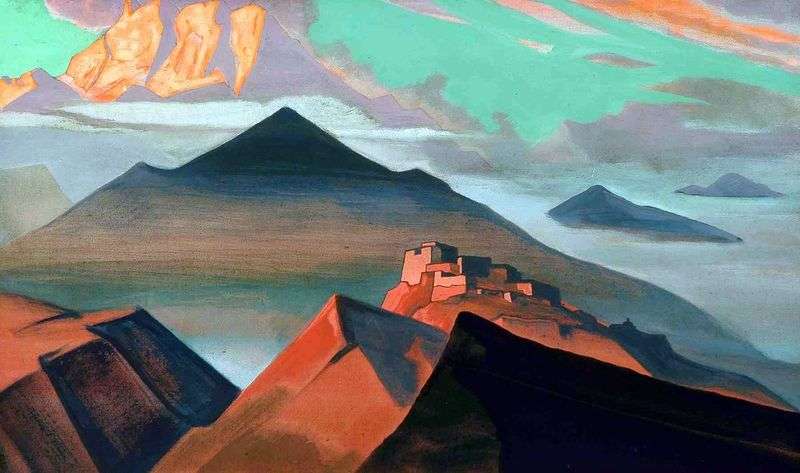 Tent Mountain by Nicholas Roerich
Tent Mountain by Nicholas Roerich